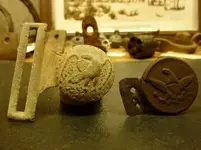The buckle piece is indeed the tongue half of a stamped brass patriotic eagle two-piece belt buckle, from the 1850's.
As Kuger kindly addressed, these types of buckles are in fact:
1. 100% pre-Civil War in manufacture and use (although there is carryover to Civil War period sites)
2. Worn on BELTS, including thin leather, cloth, and elastic/rubber
(Through exhaustive research, there has been no reference to these ever being on any type of "sash")
3. Most of this style were worn by men (Although there are smaller ones likely worn by women and children)
4. Not directly military related (Likely sold to the general public through retail outlets in major cities)
5. Popularity tied to the style of clothing in vogue during the Westward Expansion of the 1850's
Furthermore, there are only a few "experts" in the research, use, history, varieties, and background of these particular tongue & wreath buckles.

And, the "experts" are for the most part, not readily available for comment on these forums.

This is the most commonly encountered style of stamped brass two-piece tongue & wreath buckle, seen recovered in America. This is not saying these are everyday finds, but rather of all the known varieties, this style is the one seen with greater frequency.
Collectors have dubbed this particular style the "stamped rope border eagle tongue", due to the encircling rope around the perimeter. There are in fact three different styles of wreaths that match this particular buckle, and excavated examples confirm this. The most commonly encountered wreath, is entirely smooth and plain, with no design or markings. Next, is the style with a lined or reeded perimeter. Finally, the rarer style wreath (and that which provides a key clue to one of the companies), is the plain style wreath with a company imprint on the belt loop, of Bondy Brothers & Co..

From further research, we find that Bondy Brothers were advertising as belt manufactures, and operating a retail store in New York City during the 1850's. Although Bondy Brothers were manufacturing the belts, the stamped brass buckles were likely produced for them by a contract supplier. My trail of further research points to a more definite possibility for the manufacturer, utilizing the rolled brass sheeting mills and die stamping works in a specific location.

We can draw from these compiled data resources on conclusion, that many of these same stamped rope border eagle tongue & wreath buckles could in fact have also been retailed through other outlets besides Bondy Brothers in New York (hence the other two styles of wreaths with no company markings).
The attached photo shows two complete stamped brass rope border eagle tongue & wreath buckles, with matching slide adjusters, as found. These exhibit the most commonly seen plain style wreaths.
CC Hunter

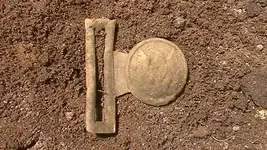
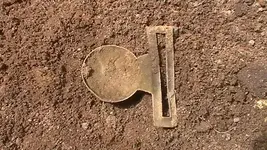
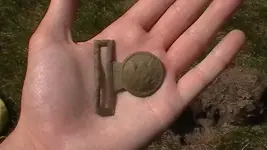
 And, the "experts" are for the most part, not readily available for comment on these forums.
And, the "experts" are for the most part, not readily available for comment on these forums. 
 We can draw from these compiled data resources on conclusion, that many of these same stamped rope border eagle tongue & wreath buckles could in fact have also been retailed through other outlets besides Bondy Brothers in New York (hence the other two styles of wreaths with no company markings).
We can draw from these compiled data resources on conclusion, that many of these same stamped rope border eagle tongue & wreath buckles could in fact have also been retailed through other outlets besides Bondy Brothers in New York (hence the other two styles of wreaths with no company markings).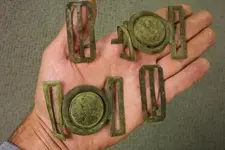

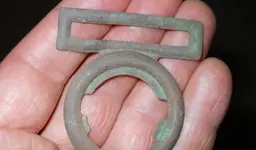



 With only a small amount of googling anyone can tell his real name was 'Samuel Langhorne Clemens'
With only a small amount of googling anyone can tell his real name was 'Samuel Langhorne Clemens' 


